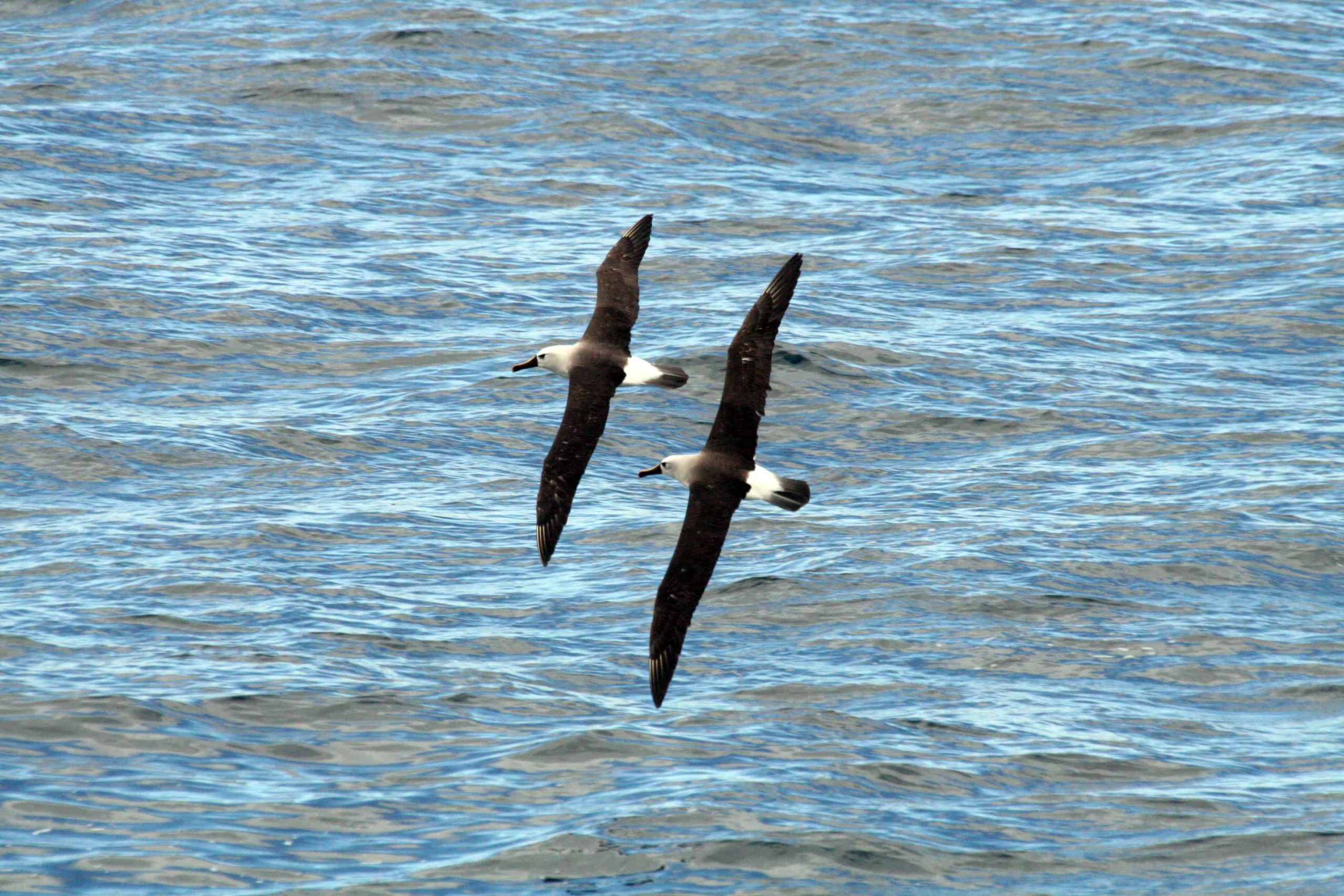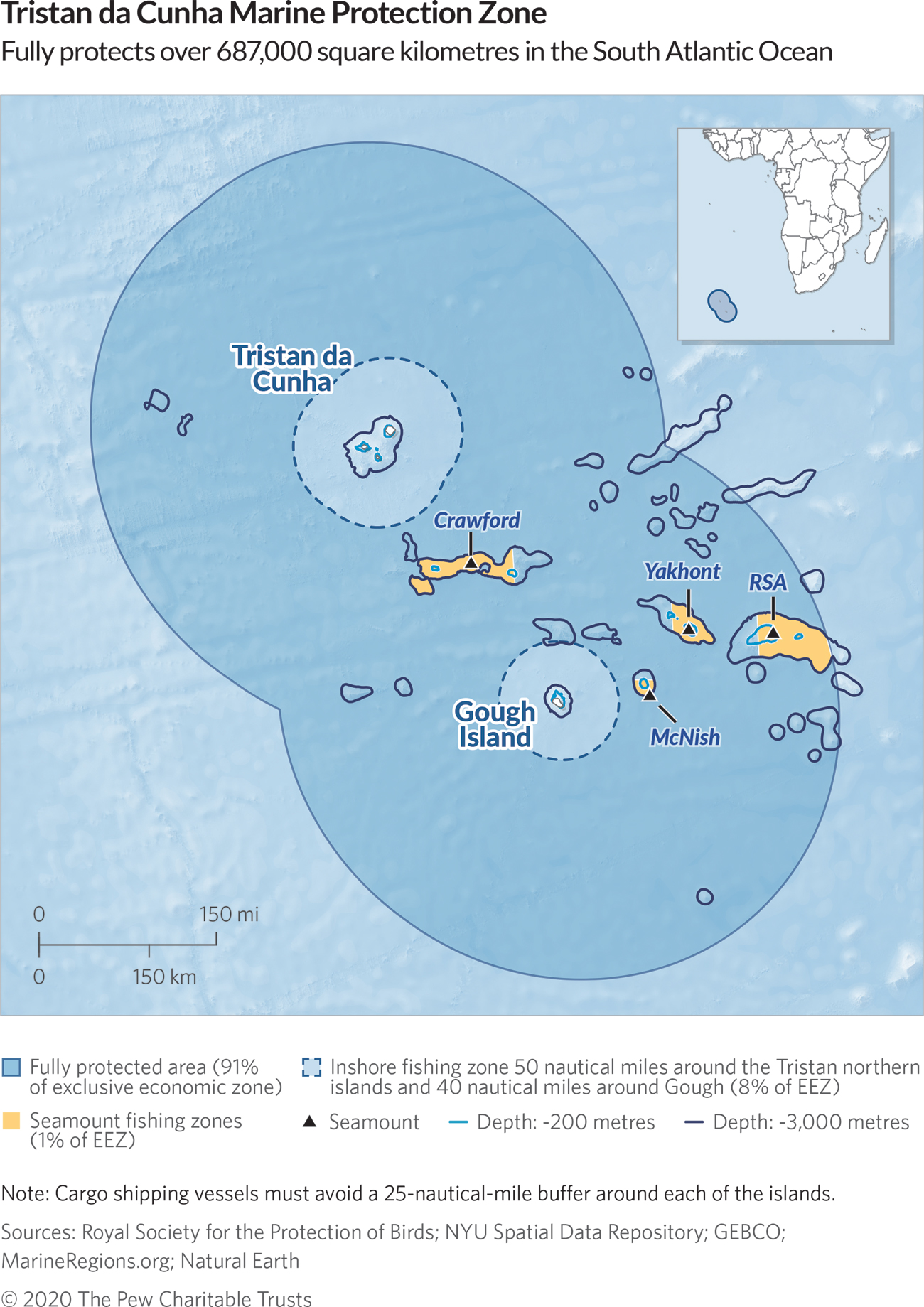As the UK Overseas Terrigtories Conservation Forum (UKOTCF; a partner of LT&C) and RSPB reports, Tristan da Cunha declared on Friday 13 November 2020 one of the world’s biggest sanctuaries. The new marine protection zone (MPZ), designated around the Tristan archipelago, covers an area almost three times the size of the UK (687,000km2). The MPZ is the largest no-take zone in the Atlantic and forms part of the UK government’s “Blue Belt” of protected areas. It will help to safeguard a wealth of wildlife, including endangered albatrosses and northern rockhopper penguins, as well as blue sharks and beaked whales. James Glass, Tristan da Cunha Chief Islander, announced: “Today we’re delighted to announce our Marine Protection Zone, exactly 25 years after we declared Gough Island in the Tristan group a UNESCO World Heritage Site.“ See also short video, produced by RSPB and National Geographic.
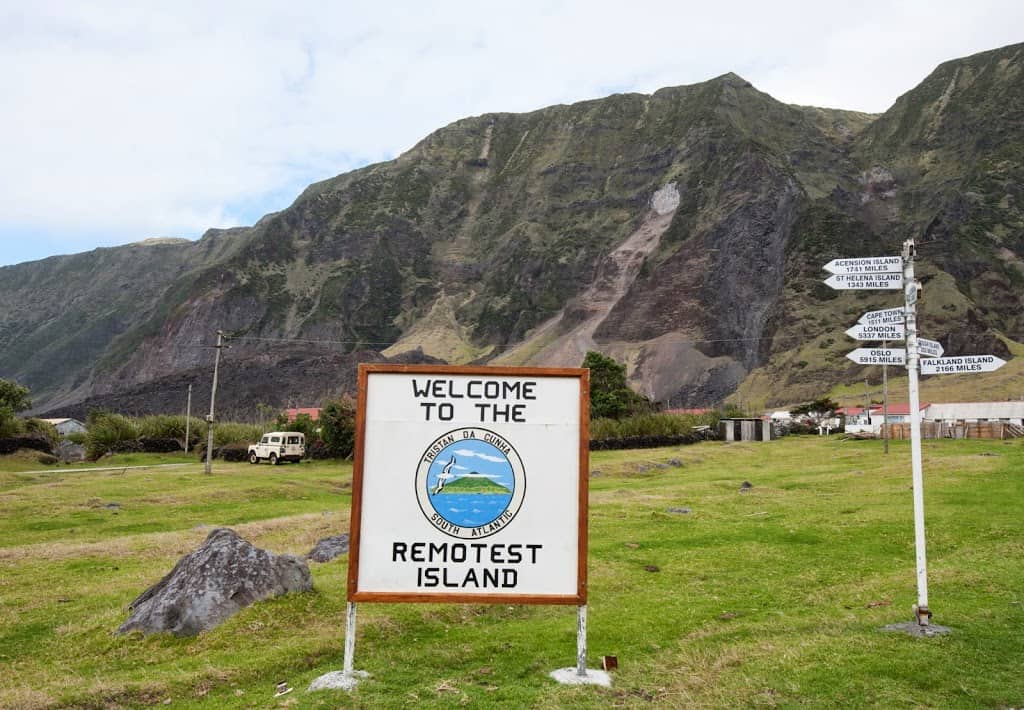
Tristan da Cunha, positioned in the South Atlantic, is home to the most remote community on Earth. It is one of the world’s most pristine environments. Tourists only rarely visit the archipelago with its about 250 inhabitants. Some of the polar expedition ships, such as the ones of LT&C founding member Oceanwide Expeditions organise stopovers when bringing their vessels from Antarctica to the Arctic or vice versa.
For reading the full story, see UKOTCF’s Forum News 53. We herewith republish only some paragraphs of it:
The Tristan da Cunha archipelago lies over 2,700 km from South Africa and 3,700 km from the nearest shores of South America. The island of Saint Helena is the closest land, 2,400 km away to the north. This makes the archipelago one of the most geographically isolated island groups in the world, and Tristan itself the most remote inhabited island in the world, as the Islanders stress. There are four main islands: Tristan itself (the only one inhabited by a human community (of about 250), Inaccessible and Nightingale within sight of each other, with Gough about 350 km SE, thereby giving the exclusive economic zone – and now its marine protected area – a sort of ‘8’ shape. Gough has a weather station, staffed by a small South African team, each of whose shifts lasts 12 months.
This mountainous island group is home to tens of millions of seabirds, and several unique land birds. It includes the World Heritage Site of Gough and Inaccessible Islands. Gough is arguably one of the most important seabird islands in the world, with Inaccessible hugely important too. There are 25 seabird species that breed in this isolated archipelago, four of which are unique to the Tristan archipelago, as well as being globally threatened: Tristan albatross, Atlantic yellow-nosed albatross, Atlantic petrel, spectacled petrel. 99% of the world population northern rockhopper penguins (known by Tristan Islanders as Pinnamins) breed in rookeries throughout the Tristan archipelago. They are so characteristic of the islands that the islanders sometimes call themselves ‘rockhoppers’.
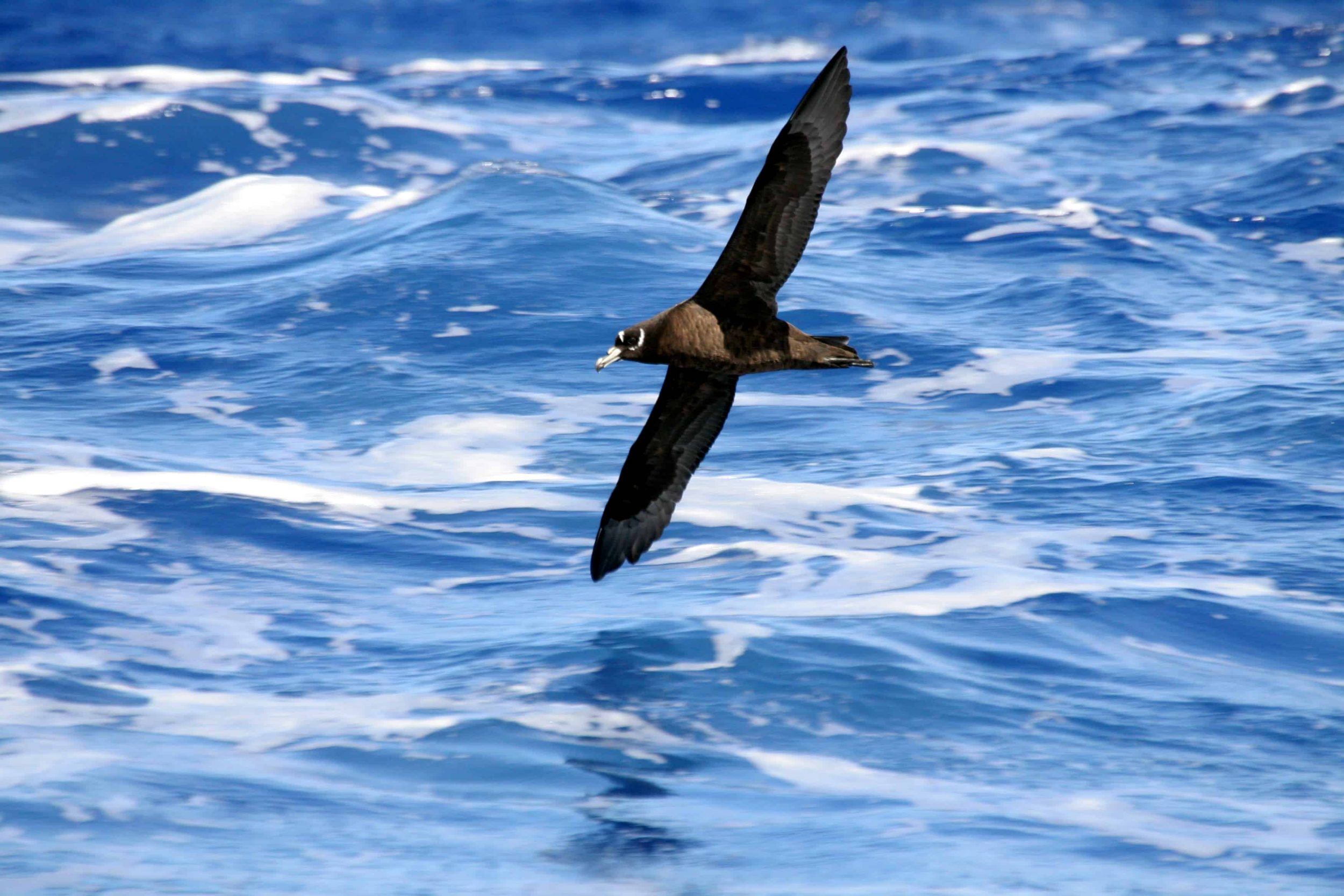
SpectacledpetrelProcellariaconspicillataoffTristandaCunhagroup;this species breeds only on Inaccessible Island. Photo: Dr Mike Pienkowski, UKOTCF 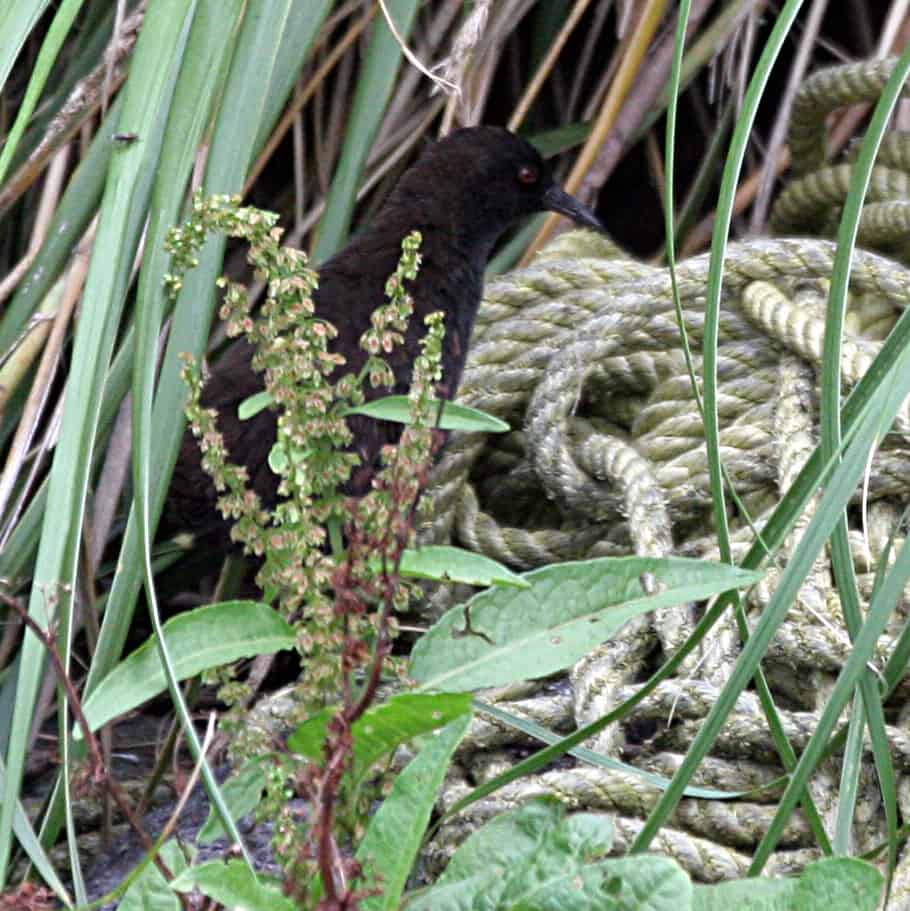
Inaccessible Island rail, found only on Inaccessible Island and one of Tristan’s endemic landbirds – and the smallest flightless bird in the world. Photo: Dr Mike Pienkowski, UKOTCF 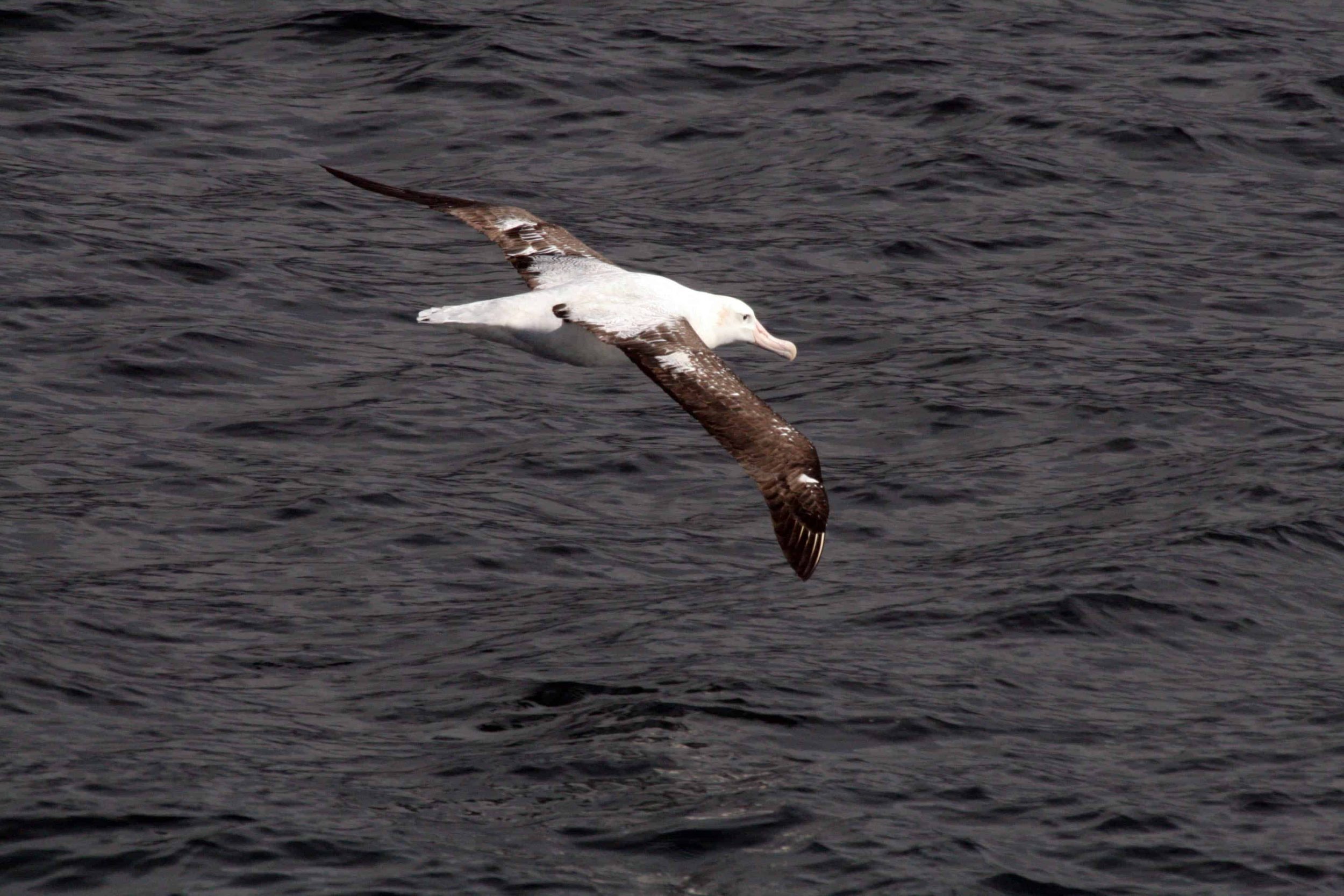
Tristan albatross Diomedea dabbenena off Gough Island. Photo: Dr Mike Pienkowski, UKOTCF
The islands support also breeding populations of fur seals and elephants seals, now recovering from the hunting of the 19th century. Many cetaceanspecies are found in the offshore waters, including southern right whales, sperm whales, humpback whales, long-finned pilot whales and Shepard’s beaked whale, as well as several species of dolphins, while threatened sharks breeding offshore.
The announcement, made by the Tristan da Cunha Government, helps the UK Government with its ambition to lead the global effort to tackle the nature crisis and secure protection of 30% of the world’s oceans by 2030.The UK has a duty to protect the wildlife found in all of its Territories and will be responsible for long- term monitoring and enforcement of this vast marine zone.
Tristan da Cunha has a long history of protecting its unique environment. The Government of Tristan da Cunha to has operated exemplary management of its sustainable lobster fishery, the basis of its economy. As noted above, this latest success is the result of 20 years of hard work, including recently a five-year programme of UK Government Blue Belt support, followed by an international coalition of partners who have generously supported the final phase. The islanders have partnered with RSPB, National Geographic, the Blue Nature Alliance, Becht Family Charitable Trust, Blue Marine Foundation, Wyss Foundation, Kaltroco and Don Quixote II Foundation to enable this large-scale declaration. British Antarctic Survey, University of Plymouth and the Natural History Museum also provided key scientific support to the Tristan da Cunha Government.
Tristan da Cunha is one of very few places in the world which can offer a baseline for an almost unimpacted temperate marine system and is recognised as one of just 62 global marine provinces, so is essential for building a globally representative network of marine protection. This zone will be the largest no-take zone ever to be established in the Atlantic and is likely never to be surpassed in scale.

